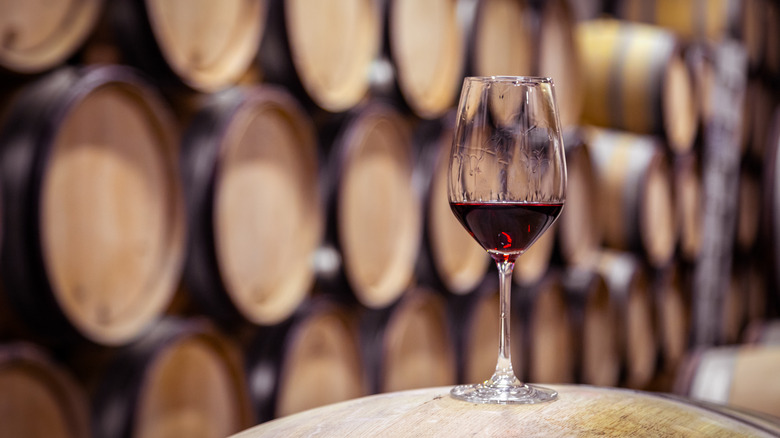Wine Barrel Trends To Know About
Find out how these experiments are disrupting the wine world
Aging wine in oak barrels has been around since Roman times. Oak is the perfect vessel: Not only does it impart a rich flavor, but it's also an easily malleable wood, which makes it ideal to form into barrels, which can then be used two or three times before losing their aromas.
RELATED 11 Secrets a Sommelier Will Never Tell You "
But oak isn't the only way to create a good bottle. Just as winemakers are constantly tinkering with grape growing, crushing, aging and bottling, so too have they been experimenting with wine barrels. Here are three new ways wine barrels are disrupting the wine world.
Mixed-Oak Barrels
Typically, wine ages in either French, American or Hungarian/Eastern European oak. And if a winemaker wants to mix flavors, he or she will combine wines that have aged in different kinds of barrels. This is called a blend.
But some barrel makers are now producing multi-oak barrels, which are exactly what they sound like: barrels made with multiple kinds of oak. Cooperages 1912 for one, makes what it calls fusion barrels, customizing the mix of oak depending on the winemakers specifications. Vintage Wine Estates has been using fusion barrels for four years, and Viansa Sonoma has used them for the last two, causing one wine blog to ask: Could this be the end of blending as we know it? Probably not, but it's an interesting new technique to keep an eye on.
For a taste of this technique, try Viansa Sonoma's Zinfandels or Bodegas Beronia's Riojas.
Concrete Barrels
If wine isn't aging in oak barrels, it's likely aging in stainless steel (or maybe clay vessels, if it's being made in the traditional Georgian method). In the last few years, however, some winemakers have started using concrete tanks. Though concrete has been used in Europe for many years, it's never competed with oak and stainless steel, and it didn't start rearing its head elsewhere around the world until about 2013.
The material is good for temperature control and also allows for the same kind of slow oxidation that oak barrels create, but without imparting any oaky flavor. Some winemakers also extol the egg shape of these tanks, which they claim adds to the complexity of the wine. Of course, concrete can be a beast to maneuver, and it also requires a particular cleaning method not necessary for oak and stainless steel. Currently, they're about the same price as oak barrels, but as they become more common, prices should drop.
For a taste of this technique, try the Sémillon, Sauvignon & Muscadelle blend from Buty winery.
Whiskey Barrels
Booze has been aging in wine barrels for years, but now the reverse is happening: Some wineries are aging their vino in barrels previously used for whiskey. In 2010, John T. Edge wrote about Dan Philips's Southern Bell Shiraz being aged in bourbon barrels, and since then more producers have been getting in on the game. The Jacob's Creek Double Barrel Shiraz finishes in Scotch barrels after aging in oak, and its Double Barrel Cabernet Sauvignon finishes in whiskey barrels. Apothic Wines just released limited-edition, whiskey-aged barrels. Brown liquor fans, rejoice. Your world continues to expand.
For a taste of this technique, try Apothic Wine's Inferno.
